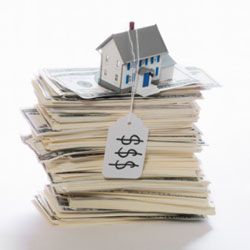Pricing your home for sale can be tricky. When looking at numbers in the hundreds of thousands, it's easy to be blasé about 10k here or there. But take a second to sit with the idea of what that money really means. If you throw a price at the market willy-nilly, you could easily miss out on a new car, a year of college tuition, a couple of luxury vacations, a down payment on another home or even a year's salary.
On the flip side, it wouldn't be hard to be whitewashed by optimism and price your home out of the market entirely. No one wants to be "that house" that's been sitting on the market for 18 months like a teenager without a prom date.
Advertisement
Instead, it's time for realism. A little up-front research and legwork to define the all-important price of your home can help grease the wheels for an easy selling experience, while maximizing your dollars at the end of the day. Here, we'll look at some of the things to consider when pricing your home.




